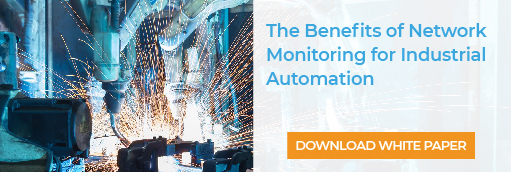A short guide on how to deal with common challenges faced by ICS asset owners in the modern manufacturing industry
The drive to increase productivity and reduce costs in manufacturing environments has led to an exponential increase in the adoption of automation on plant floors. This integration of computation, networking and physical processes is what has characterized the 4th industrial revolution of today, known as Industry 4.0 or the Industrial Internet of Things (IIoT). Although this trend provides clear business advantages, it has also led to manufacturing networks which are more interconnected, complex and heterogeneous. As a result, today’s manufacturing networks are operating with an increased risk of cyber incidents.

Cyber incidents are not limited to cyberattacks. A cyberattack on a manufacturing facility would be damaging, but it’s not the most prominent threat to a network’s operational continuity. In fact, small to major network or process disruptions due to misconfigurations, erroneous commands, software errors or device failures, can occur almost daily. Fortunately, there are steps you can take to prevent these cyber incidents from impacting production.
Here are three common challenges faced by manufacturers today and how you can address them to build a more cyber resilient network:
- Identifying and Correcting Misconfigurations: Network misconfigurations include unstable or broken links, commands that don’t reach the destination, a network service or IP misconfiguration, “noisy” devices causing traffic floods and devices not configured correctly by the vendor or system integrator. These misconfigurations happen frequently and can have a moderate impact on your bottom line, as the network will not always operate reliably or correctly. To maintain operational continuity, you need to have visibility of all assets and communications within your network and leverage this visibility to identify any existing misconfigurations.
- Preventing Operational Disruptions: Operational disruptions can be caused by anything from a malfunctioning device to process instability and anomalies. These glitches happen very frequently and can have a serious impact on your organization’s bottom line. The first step to prevent disruptions is to assess the current operational state of your network and take the appropriate steps to fix any existing anomalies. The next step is to implement continuous monitoring of your network to catch the early indicators of threats to operational continuity.
- Securing the Network Against Cyber Threats: Although rare, a cyberattack could be devastating to your organization’s reputation and bottom line. Whether it’s ransomware or a targeted, zero-day attack, these incidents can be detected and prevented with the right plan in place. First, your organization must have an up-to-date inventory of its digital assets to develop an understanding of its network to pinpoint any existing vulnerabilities within it. Second, you need to have authentication processes in place to guard your digital and physical assets. Third, your organization needs to have the ability to detect anomalous activity. The most effective way to achieve this is to deploy a continuous monitoring solution. Finally, your organization should have a contingency plan in place to quickly respond and recover from a potential cyberattack. The NIST Cybersecurity Framework is an excellent guideline to use when strengthening your cybersecurity practices.
Despite the security challenges presented by the evolution of Industry 4.0 / IIoT, your organization can remain resilient and profitable by gaining proper visibility into its network and processes to detect and prevent both cyber incidents and attacks. To learn more about the benefits of continuous monitoring for industrial automation, download this whitepaper.
